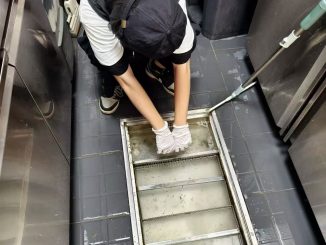
Attracted by Australia’s diversity and strong education system, more international students are choosing to study media here. But after graduation, they are faced with enormous employment challenges, especially the increasing difficulty in finding a job in the industry locally in Australia.

“I stopped trying after over 100 job applications.” Olivia says with a tired smile. “I thought I did everything right: good grades, two internships, and a published article. But it wasn’t enough.”
Olivia’s experience isn’t rare. Each year, international students make up a significant part of media and communication programmes across Australian universities. They come with creativity, passion, and global perspectives. But when it comes to finding a job in the local media industry, many hit a wall.
Why is it so hard to get in?
Let’s start with some data. According to the QILT Graduate Outcomes Survey, employment rates for creative fields like media and communication are consistently lower than those for fields like health or engineering. And for international students, the gap is even wider.
Olivia says one of the biggest issues was getting experience during uni.
“Most internships I found were only open to citizens or PRs, or said that in the fine print,” she explains. “During uni, it was hard to find internships that were paid or even open to people without PR. So I had to do unpaid work for student media just to have something on my resume.”
A report from Deakin University supports this. Many international graduates struggle to build networks, understand local work culture, or convince employers to take a chance on someone with a temporary visa.
Visas and red tape
Australia’s Temporary Graduate Visa (subclass 485) allows international students to stay in the country for two to four years after graduation, depending on their level of qualification. This period is intended to allow graduates to gain work experience and potentially transition to permanent residency.
However, many media employers do not want to hire applicants with temporary visas. Although recruitment notices rarely specify visa requirements, international graduates often face obstacles in the recruitment process. For example, Olivia recalls a recruiter expressing concern about the administrative complexities associated with temporary visa holders, suggesting that she posed an “administrative risk”.
Recent policy changes have further increased these challenges. The Australian Government has imposed stricter rules on 485 visas. These include lowering the maximum qualifying age from 50 to 35 years, increasing the English proficiency requirement, and limiting working hours except in key sectors. These changes have raised concerns among international students about their future in Australia.
Still keeping efforts
Despite increasing challenges, many international students are still doing everything they can to stay in Australia to work towards their dreams. Some have turned their personal experiences into online resources by using social media to express their stress at the situation and to encourage more peers in the same struggles.
As an international student who graduated with a degree in “Business in Mark Marketing”, Anshul demonstrates the pressure of being unemployed and finding a new job quickly to qualify for permanent residency on YouTube. His channel now serves as both a creative outlet and a survival tool.
“I graduated with a degree in marketing and landed a job even before my ceremony,” he says. “But after a short-term contract, I’m back on the hunt—and it’s hard.”
Instead of staying silent, Anshul records his entire journey online. From job rejections to visa updates, his videos serve as honest “reality checks” for other international students.
“Your GPA is not enough,” he says. “Start building your network. Put yourself out there on LinkedIn, on YouTube, anywhere. That’s what gets you hired here.”
He combines his real-life experiences with useful advice that has resonated with thousands of international students. He encourages students to build portfolios as early as possible, to share their portfolios publicly, and to consider each small freelance project as evidence of their capabilities.
In a system that often overlooks international graduates, these student-led communities offer not just information, but hope. Their stories remind us that while the barriers are real, these students are still trying, still dreaming, and still showing up. For themselves and for others.
These stories reflect a common thread: international graduates are qualified, motivated, and full of ideas—but without clear institutional support or accessible entry points, their creative potential rarely translates into sustainable careers. And while content creation is powerful, it shouldn’t be their only option.
“It’s what I love”
For many international students, the hardest part isn’t just the job rejections—it’s the slow erosion of belonging.
“I feel like I don’t belong here,” says Olivia, “I know I’m good at what I do, but it feels like there’s an invisible wall.” She’s faced many rejections, many of them silent. “I’ve cried over emails. I’ve doubted myself a lot.”
Still, she doesn’t regret her path.
Her voice breaks, not with defeat, but with something deeper—conviction.
“The belief that stories matter. That voices like mine—international, multilingual—deserve to be part of the media here. That means something.”
That belief is echoed by Anshul, who also left behind familiarity to chase a future in Australia. Even after losing his job, he continues to create, share, and support others through his videos.
“I’m technically unemployed, but I’m still working on myself. Helping others. Staying visible.”
These students didn’t come to Australia for easy wins. They came for something meaningful—to tell stories that matter, to build something lasting. And even when the system fails them, they keep showing up.
It’s not blind optimism. It’s resilience.
It’s a quiet persistence, even if they have to carry the burden of this dream alone.
What could change?
The current system needs more than minor adjustments.
Universities should offer clearer career pathways for creative fields like media. They can also support international students with better training in networking, job preparation, and visa guidance.
At the same time, media organisations play an important role. Making recruitment routes more transparent and actively encouraging a diversity of applicants (including those on temporary graduate visas) would help level the playing field.
Visa policy may also evolve, potentially adapting to the realities of the modern job market. Simplifying post-graduation work rights, reducing administrative complexity, and providing clearer guidance to employers could make them more willing to take a chance on international graduates.
But for now, many international media students still struggle to enter their professional industry, although they are creative, capable and aspiring.
“Be prepared. Don’t just focus on the assignments. Build a network, talk to local students, and understand the visa system early. And know that the creative dream is great—but in Australia, it’s hard to live off just that.”
Olivia’s advice is a reminder that surviving in this system takes more than talent, it takes strategy, support, and a whole lot of resilience.




Be the first to comment